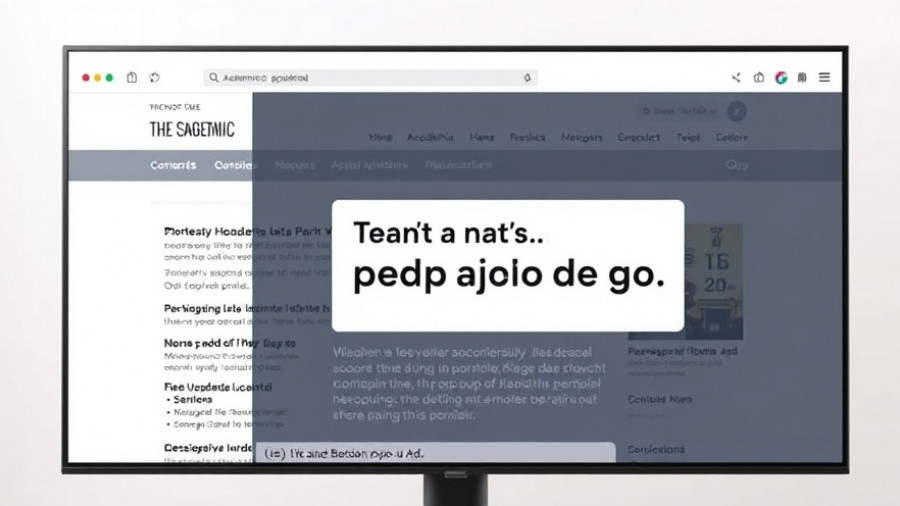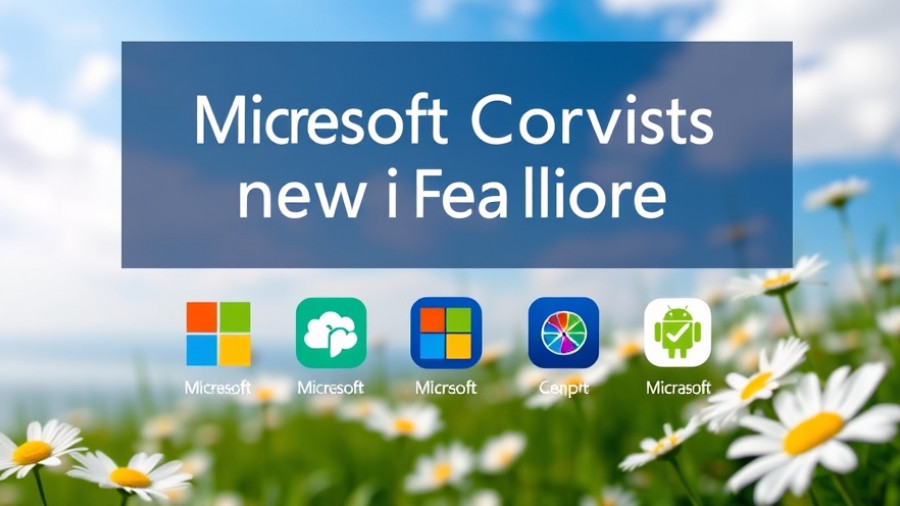
The Curious Case of Microsoft Surface: Is it an iPad after all?
In an embarrassing gaffe that showcases a deeper issue within Microsoft, the tech giant's official Surface account recently posted an image claiming its Surface Pro device was the ultimate research buddy, only to highlight it running iPadOS instead of Windows. The post, shared on X (formerly Twitter), quickly drew attention not just for its content, but for the implications surrounding Microsoft's marketing strategies.
Unpacking the Mistake: A Marketing Oversight?
The image featured a Surface Pro with a visual that was poorly photoshopped to include a screen showing iPadOS, complete with the unmistakably distinct status bar. This oversight ignited widespread trolling and memes across the platform, with users questioning how such a significant error could slip past Microsoft's quality control. It's not just a minor misstep; it's a reflection of the brand struggling to maintain credibility amidst a rapidly shifting technology landscape. Many users echoed sentiments like, "If Microsoft can't even showcase its product correctly, how can we trust it?" This incident quickly became a critique of Microsoft's priorities, particularly under CEO Satya Nadella's leadership.
Social Media: Missteps Highlight a Bigger Issue
To many observers, this incident underscores a long-standing concern: Microsoft’s neglect of its consumer-facing products. With more resources poured into ambitious AI ventures, such as developing its Copilot AI tools, there's been perceived underfunding and a lack of support for established brands like Surface and Xbox. Critics argue that as Microsoft chases after the latest tech trends and hypes AI capabilities, its core consumer products suffer, leaving loyal customers feeling abandoned—an issue that may be detrimental to brand loyalty in the long run.
What This Means for Microsoft’s Image: A Consumer Perspective
The Surface incident serves as a bellwether for Microsoft’s current standing in the tech arena. While innovation in AI is certainly critical, depicting a lack of faith in its existing products can alienate a consumer base that feels overlooked. With features such as Microsoft's Copilot AI aiming to enhance user productivity across their platforms, it raises a question: will these innovations fully compensate for the misaligned marketing efforts? If consumers feel that core products aren't getting the attention they need, it could lead to skepticism regarding new offerings, regardless of their sophistication and promise.
Lessons in Corporate Responsibility and Brand Stewardship
Furthermore, this event demonstrates the balance companies must strike in their marketing endeavors. As the online community turned the narrative into a meme, it reveals an important lesson for Microsoft and similar tech giants: the need for transparency and accountability in branding. It's imperative for companies to connect genuinely with their audience, which requires recognizing when their messaging is flawed. Understanding this connection can prevent misunderstandings that lead to public backlash and can bolster consumer trust.
Looking Forward: A Call for Strategic Focus
As Microsoft forges ahead, it faces the challenge of re-establishing its credibility while simultaneously innovating. The company’s ambition to integrate more AI solutions—evident in the development of features like Copilot—needs to be matched by a commitment to its existing products. Consumers must be reminded of the value and capabilities of these technologies without the clumsy missteps evident in the Surface marketing blunder.
The backlash from this incident illustrates a deeper trend: whether across social media platforms or product release cycles, companies today must remain vigilant and engaged with their consumer bases. Microsoft has an opportunity here, to recalibrate its messaging and recommit to delivering quality products that resonate with its users.
In conclusion, how will Microsoft extract lessons from this recent social media slip-up? Acknowledging mistakes is the first step toward rebuilding trust, and prioritizing product stewardship could ultimately serve to unify the brand's narrative amidst its ambitious AI pursuits.
 Add Row
Add Row  Add
Add 




Write A Comment